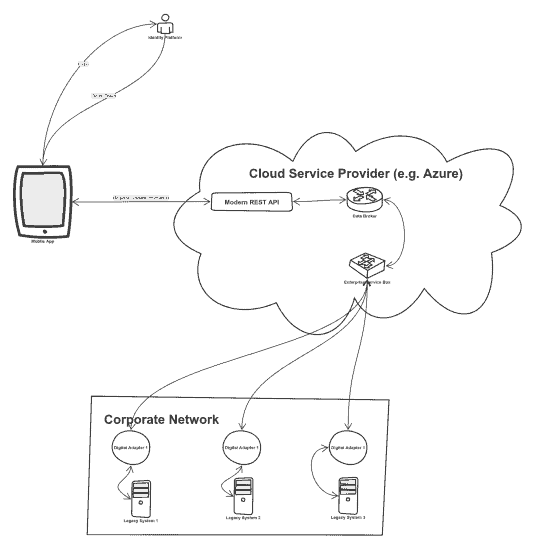An Expert Guide to Using Digital Platforms

How to Architect Cloud Based Platforms for Digital Systems Integration
Typically a Digital Platform design consists of these platforms and components:

This diagram below illustrates how these components fit together.

The Switchboard Approach
Later in this blog, we will explore different digital platform strategies for implementing a Digital Platform such as Switchboard, Sync and Hybrid. For now, this article will focus on the Switchboard approach.
In this approach, a user is using a modern iOS mobile App which accesses the Digital Platform. The sequence of events is:
- The user requests information using the modern API relating to a particular Product
- The Identity Platform authenticates the user
- The Security Manager authorises the request
- The Data Broker dispatches messages requesting information about the Product to all Digital Adapters
- Each Digital Adapter simultaneously returns all information that it has relating to the Product to the Data Broker
- The Data Broker collates all the data and returns it to the App via the API response
This sequence of events can be synchronous or asynchronous depending on the availability and reliability of the systems a Digital Adapter is connected to.
The Microsoft Azure Implementation
Many cloud based platforms can be used for this type of digital systems integration. The diagram below shows a Microsoft Azure based implementation of the Digital Platform as described above:

The Benefits
It can be seen that the Digital Platform approach allows a modern, REST API to easily overlay legacy systems through the use of cloud technologies and Digital Adapters.
Click below to view the next chapter on how to do data modelling for your new Digital Platform.
